
Lightroom Classic’s powerful masking tools now include AI-driven Subject and Sky Select tools, luminance and chroma masks and the capability of adding, subtracting or intersecting masks for quicker, more accurate, more intricate masking than ever before.\
Summary
Lightroom Classic is the traditional desktop version of Lightroom; yet while its name suggests otherwise, its features remain cutting-edge. One major recent improvement, introduced in October 2021, was an overhaul to masking tools which significantly increased their power. Although powerful and effective in general, Lightroom Classic may still fall short when it comes to raw processing capabilities as its interface can feel quite cumbersome and overwhelming at times. While it receives high marks for scope and power value as part of Adobe Photography Plan subscription plans; quality conscious photographers might consider other alternatives like Lightroom Classic before making their decision!
Pros
+ Good value as part of the Adobe Photography Plan
+ Powerful organising and search tools
+ Wide support for camera RAW formats/lens correction profiles
+ Automatic/manual perspective correction/transform tools
+ Terrific new masking tools
Cons
– Can be slow on low/mid-range computers
– Handles high ISO images quite poorly
– Interface looks dated and cluttered compared to Lightroom
What Is Lightroom Classic?
Lightroom Classic is an all-in-one photo organising, editing, and RAW processing program intended to meet the needs of amateur, expert, and professional photographers. Although Lightroom and Photoshop share many basic editing tools that overlap, each program specializes in different jobs; please refer to this comparison of Photoshop vs Lightroom for further insight.
Adobe no longer sells Photoshop separately but rather as part of various Adobe software subscription plans, with one specifically tailored to photographers called the Adobe Photography Plan at PS9.98/$9.99 per month when paid annually.
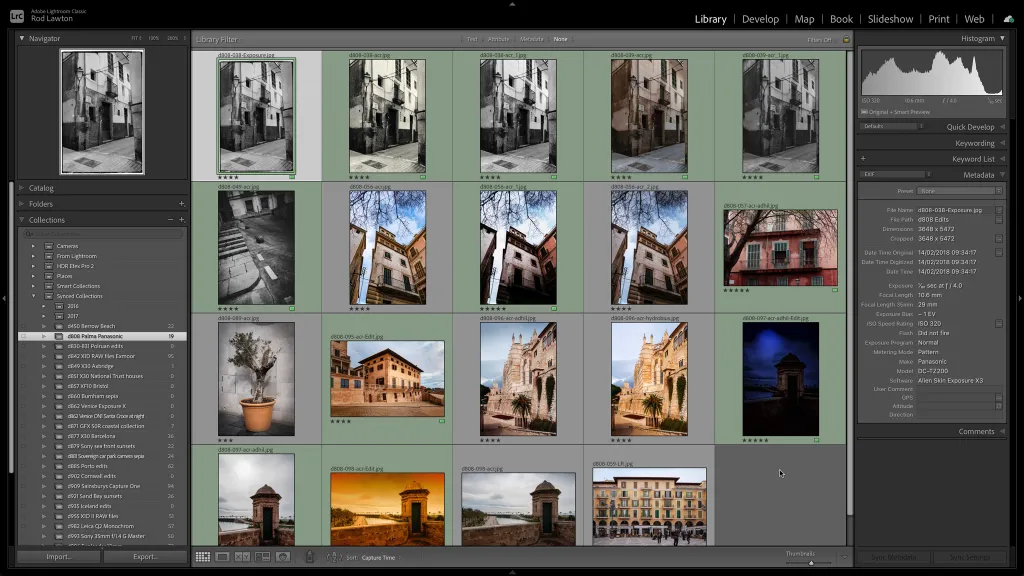
Lightroom Classic was the original desktop first version of Lightroom and remains its most powerful application. You can sync your image Collections via Creative Cloud but only Smart Previews (these can still be edited online and in mobile apps).
Lightroom comes in two versions. Lightroom Classic can store photos on your own computer; Adobe calls this the ‘desktop first’ approach. Lightroom CC (or just plain “Lightroom”) is a newer, streamlined version which stores them online using Adobe’s servers – this version of Lightroom is known as web first and reviewed here.
Although similar, these are two separate programs despite sharing many tools and the same name; therefore, not everyone may enjoy using Lightroom Classic version. For more information about differences between both programs please read Lightroom Classic vs Lightroom article.
Lightroom Reviews And Articles Articles About Adobe Photography Plans Including Lightroom/Adobe Photography Plans.
How Does Lightroom Classic Work?
Lightroom Classic imports your images into one or more ‘catalogs’ (image databases). Each photo is then stored with both its thumbnail and larger preview image, plus links back to its original file on your computer. Depending on their current location or if importing directly from memory cards, Lightroom allows for direct upload.
Once photos are imported into the catalog (commonly referred to as the Library), they can be viewed in their original folders or created into Collections that allow you to group related photos without altering their physical locations.
Lightroom Classic provides advanced image filtering and searching capabilities, and Smart Collections based on multiple search criteria will automatically find and display matching photos.
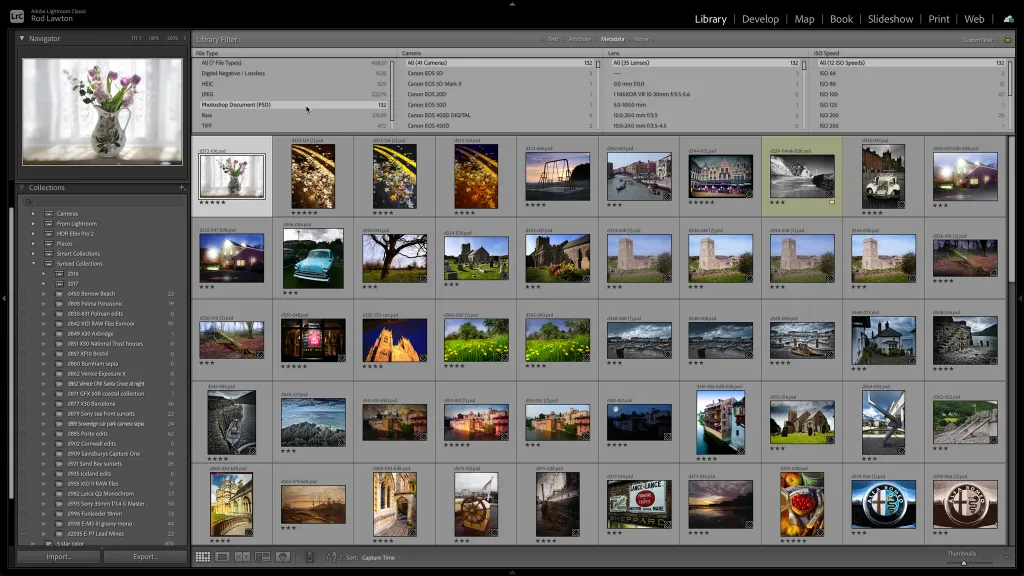
Lightroom Classic stands out from competing comprehensive programs with its advanced filtering and search features, making the software standout from others by offering more effective filters and searches than its rivals.
Lightroom Classic’s editing tools
are non-destructive, meaning any adjustments made can be altered or deleted any time in the future. Your adjustments are stored as processing instructions by Lightroom so that they are visible live but are only permanently applied when you export a processed photo; doing this allows you to share an edited photo with anyone, print it or use it online.
Lightroom Classic’s editing tools are extremely robust. You can edit RAW files alongside JPEGs and TIFFs seamlessly without intermediate processing; in fact, Lightroom Classic excels when used to work with RAW files as they allow you to bring back extra shadow and highlight detail that may not exist in JPEG images, as well as select another white balance setting after taking the shot.
Lightroom Classic does not support LUTs (look-up tables), as used widely in video and photo editing, but does offer profiles for applying various looks to photos as a sort of pre-processing step, replicating camera’s picture styles while providing plenty of originals options as well.
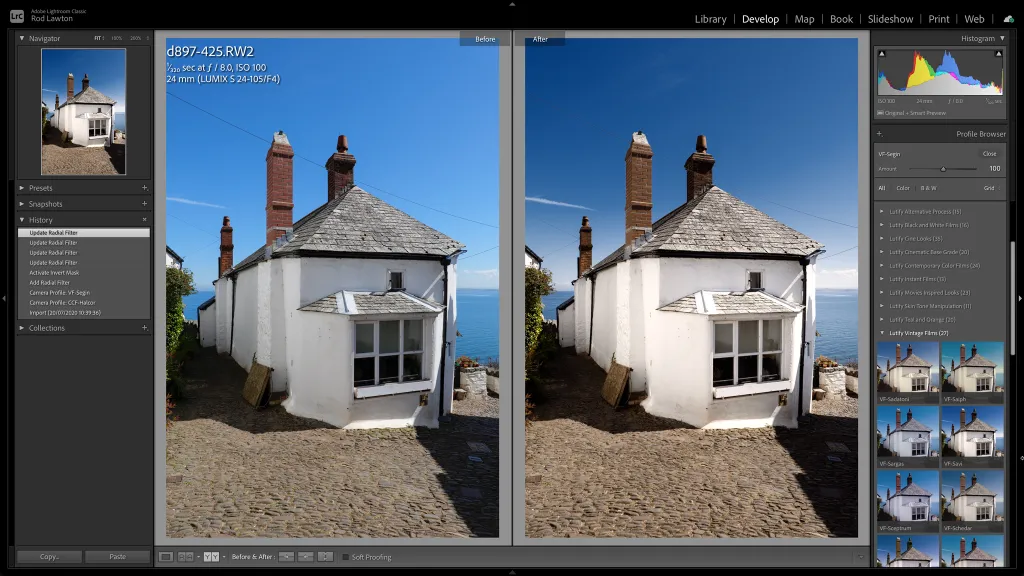
Add Profiles (not the same as Presets) quickly to give your images specific looks. Here is an example of a third-party Vintage Film profile called Savi from Lutify.me.
Also included are highly effective local adjustment tools that make applying local changes much simpler, with AI-powered Select Subject and Select Sky tools, luminance/chroma masking capabilities and the unique ability to combine masks in various ways by adding, subtracting or intersecting. This feature has received a substantial upgrade since October 2021.
* Learn more: How the Lightroom Select Subject tool works
Adobe subscription models provide one advantage of Lightroom: regular updates and feature additions – usually around three per year – without incurring upgrade charges or any hidden costs.
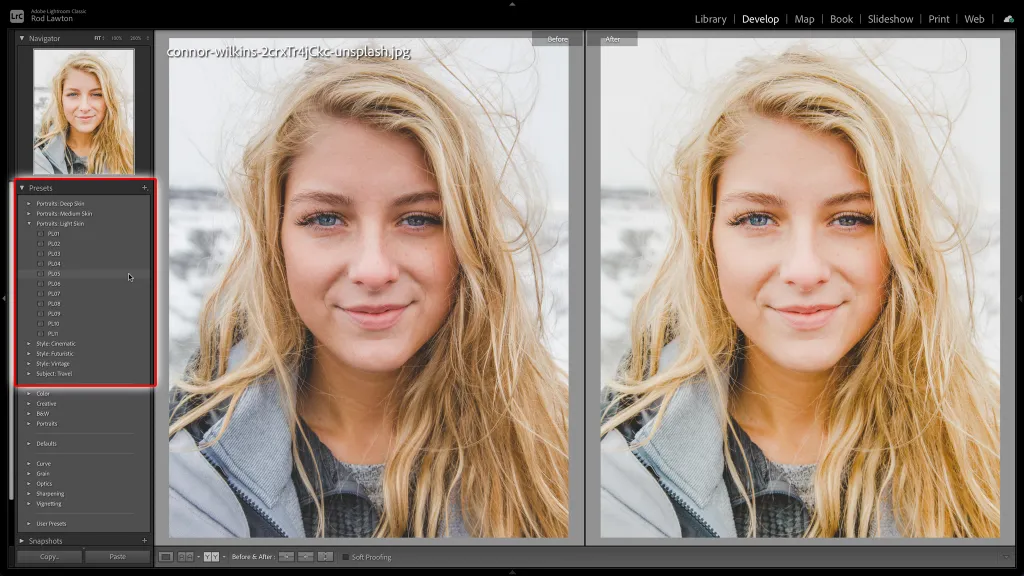
Lightroom Classic may not offer AI portrait enhancement tools like those found in programs like Luminar AI and ON1 Photo RAW, but its Professional Preset packs provide some nice portrait effects. Photo by Connor Wilkins on Unsplash
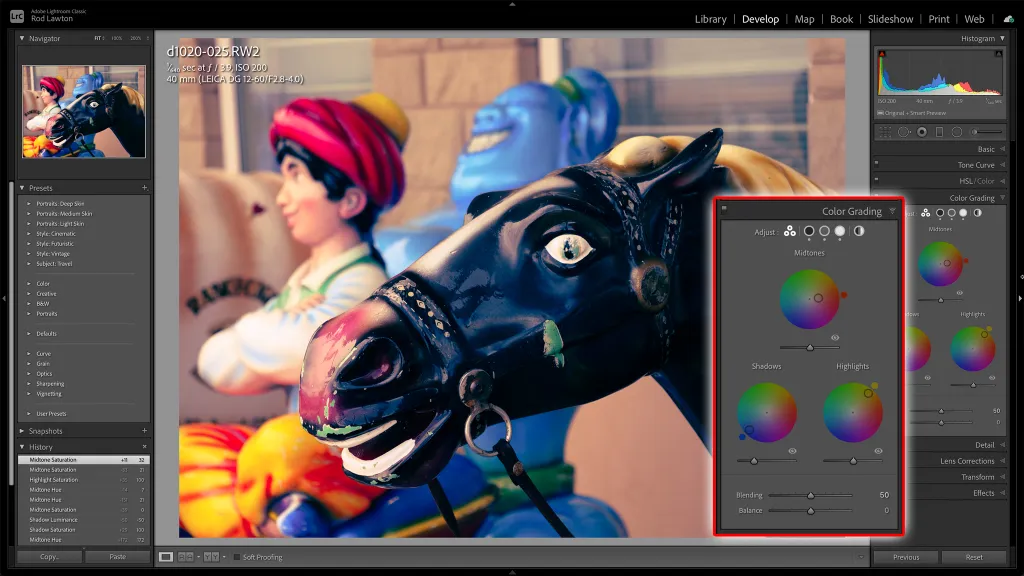
The old Split Toning panel has now been changed into a three-way shadows/midtones/highlights Color Grading panel to cater more closely with color photography. Personally, I prefer Profiles or HSL adjustments.
For example, the October 2020 update brought with it a brand-new Color Grading panel, complete with individual adjustment wheels for shadows, midtones and highlights in your images – replacing the previous Split Toning panel.
Read More: Understanding Lightroom Color Grading Tools : how does it Work?
Adobe also introduced live view tethered shooting support for Canon cameras, although only certain higher-end DSLRs are currently supported. Lightroom is often known for being slow; with this update bringing faster editing with brushes and gradients as well as better thumbnail scrolling for folders and collections. Finally, “Scrubby Zoom” and “Box Zoom” options were made available on machines using GPU acceleration.
Adobe released its March 2021 update as a relatively minor one, including further performance upgrades for thumbnail scrolling and batch processing, plus beta testing of tethered live view support for Nikon cameras – clearly targeting its chief rival in professional studio photography, Capture One.
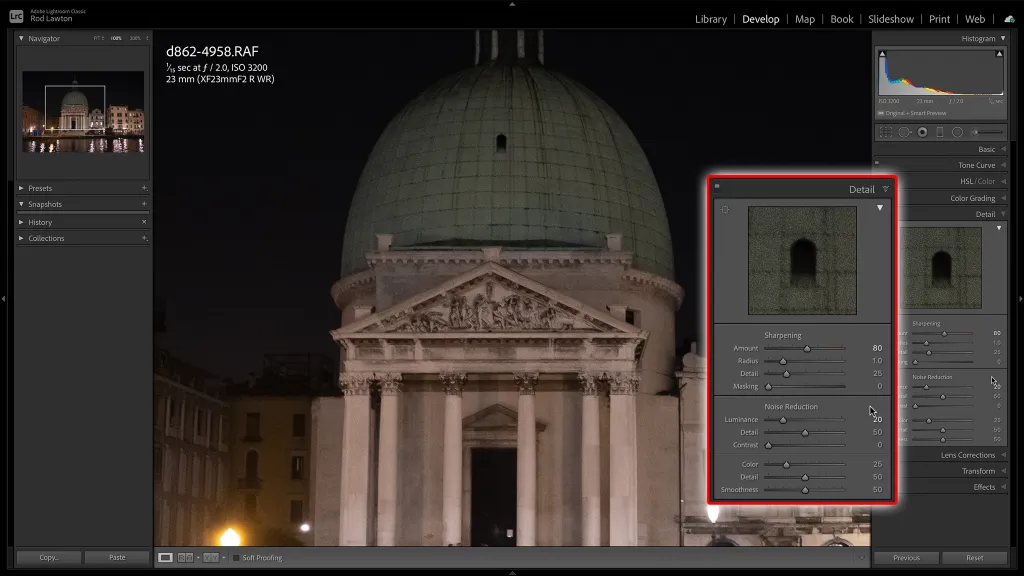
Lightroom Classic can still be challenging when it comes to finding an optimal balance between noise reduction and detail, but now offers adaptive ISO presets so you can choose images with two different ISO settings and create a preset that adjusts according to their ISO setting.
The June 2021 update was especially expansive. Mac owners saw major benefits as Lightroom Classic now offers native support for M1 Macs; additionally, Adobe Camera Raw’s Super Resolution image enlargement tool made its debut within Lightroom Classic; and tethered live view support for Nikon cameras went from beta status to official features.
* Read More about Adobe’s Super Resolution tool here: Are they any good?
Lightroom Classic now comes standard with an extensive array of presets that may reduce users’ need to utilize third party preset markets as much. Plus, Lightroom Profiles provide another means for creating distinctive image ‘looks’.
*DxO PhotoLab, Lightroom, or Capture One? – Which software should I choose for RAW processing?
Adobe’s Super Resolution feature is now available in Lightroom, and uses artificial intelligence (AI) to double the width and height of RAW files to retain their appearance of detail.
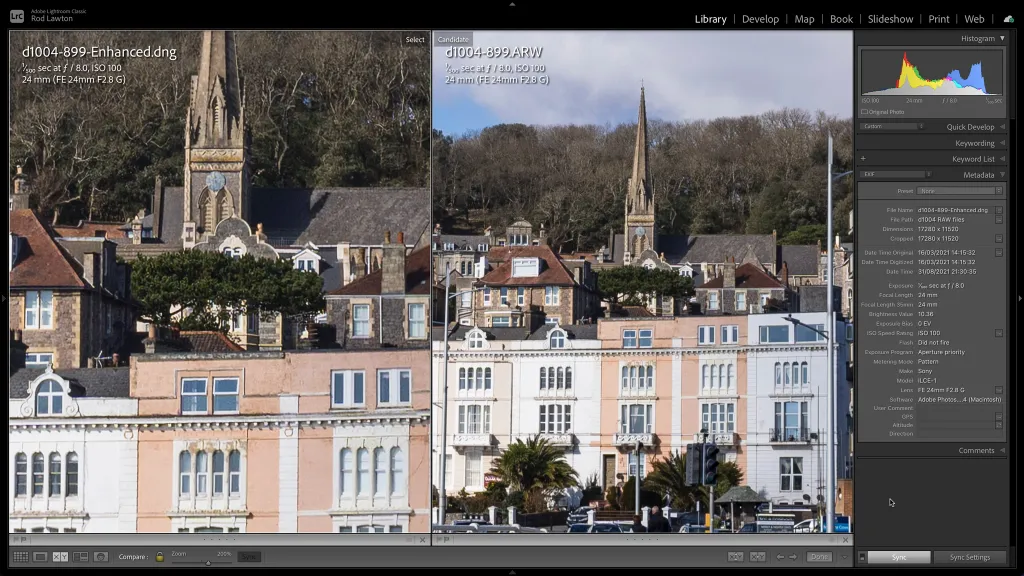
It has resulted in an amazing level of extrapolated detail (left) in this Sony A7R II RAW file compared to its original (right). But there’s a catch: the enhanced DNG is approximately five times bigger than its RAW equivalent!
Lightroom preset packs have become an after-market product, yet its built-in profiles and presets have become so robust that it may be wiser to make use of what Lightroom already provides before spending any money on preset packs. Some companies even provide presets free as a ‘taster’ or goodwill gesture; ON1 Software for example offers several such presets completely without strings attached other than providing your email address as proof.
Lightroom Classic Integrations
Lightroom Classic is tightly integrated with Adobe Photoshop as part of the Adobe Photography Plan, so that images sent for further editing in Photoshop from Lightroom will automatically return back into Lightroom after being altered in Photoshop – perfect for sending to further edit in PS and returning them back as edited versions in Lightroom as new images alongside their originals! Many third party publishers also make Lightroom plug-ins; DxO Nik Collection plug-ins or Exposure X7 from within Lightroom work as examples here; ON1 Software recently configured their key tools as Photoshop/Lightroom plug-ins as well.
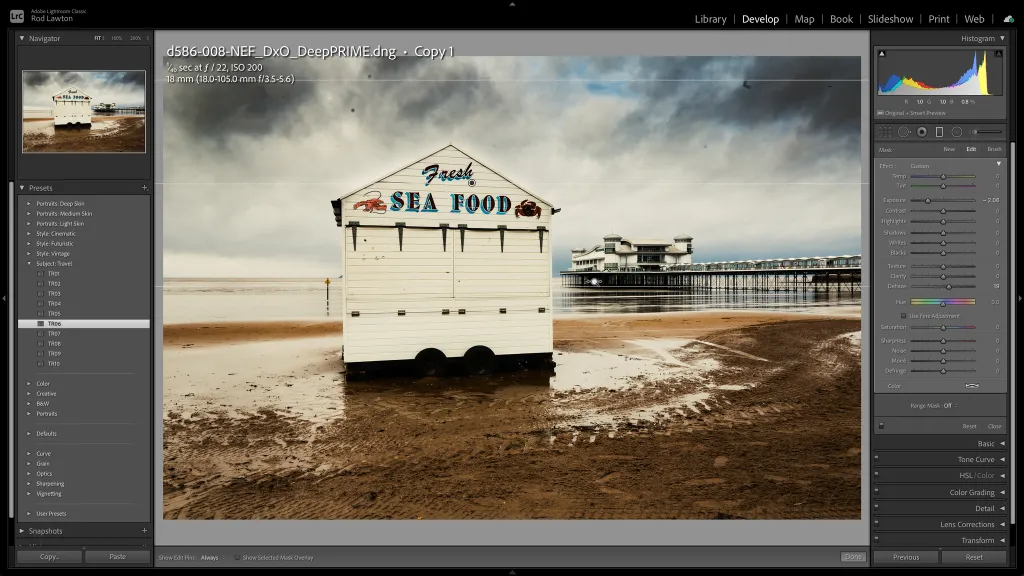
Lightroom Classic can open Linear DNGs produced by DxO PureRAW and edit them as regular RAW files, providing the ability to integrate both DxO processing and Lightroom editing simultaneously.
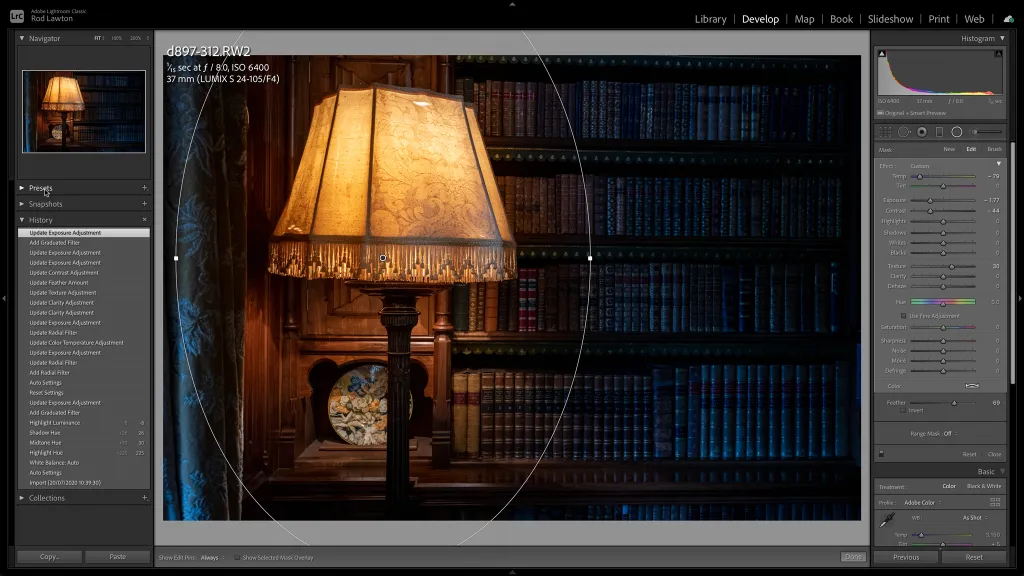
Lightroom can produce an extensive variety of effects without needing plug-ins or external editors.
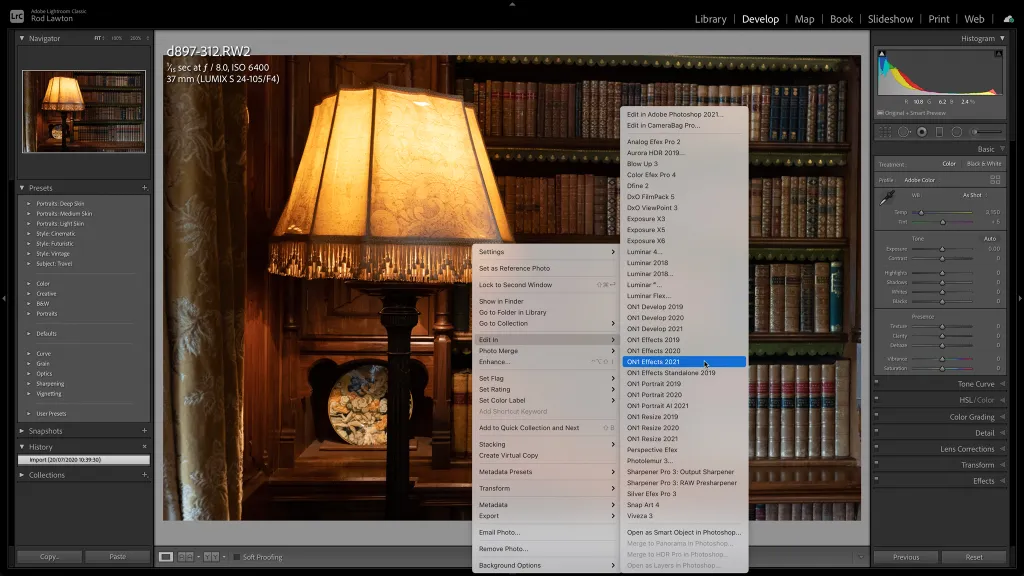
But if you do require another program, nearly all plug-in packs come compatible with Lightroom, and an external editor can be configured alongside Photoshop for enhanced productivity.
Simply sync Collections with both Lightroom Web and Lightroom Mobile for convenient editing on both platforms – using either web browsing or the Lightroom Mobile app on mobile devices.
Lightroom Classic and the new Lightroom CC both synchronise lower-resolution “smart previews” over the cloud, so any adjustments made on other devices are automatically updated in your main library; if you need the full-resolution version of any image though, that must still come from your main computer’s Lightroom catalog.
Lightroom CC operates differently. In this environment, all your images are stored in their original formats at full resolution on Adobe’s Creative Cloud servers – giving your entire image library access wherever it may be needed, though this requires much more online storage space that you must pay extra for.
Lightroom Classic CC provides lower-resolution Smart Previews and selective Collection sync, which may suffice for many photographers.
Quality of Results
Lightroom Classic has both positive and negative features. While it offers powerful image organising, processing and editing tools all-in-one, its optimization of fine detail and noise may not match other programs; you could spend too much time fiddling with noise reduction and sharpening sliders trying to get optimal results from Lightroom Classic alone. DxO PhotoLab produces cleaner and sharper images by default using its DeepPRIME image processing for high ISO images; its colour tone controls are superior compared with Lightroom; plus Capture One 22 offers better RAW processing as well as advanced layers-based local adjustments than Lightroom offers.
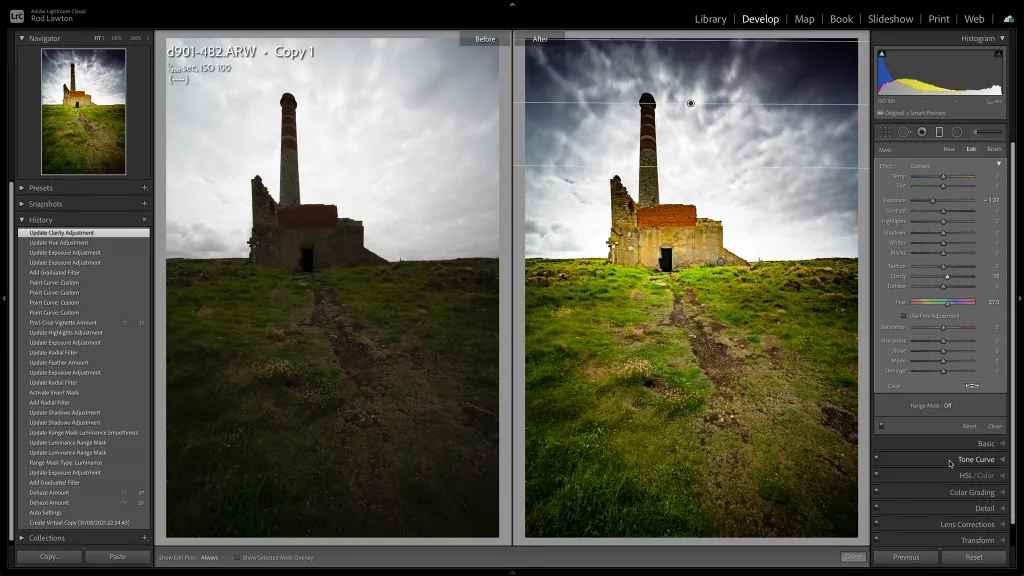
Lightroom’s capabilities are only limited by your imagination – not its tools – while the History panel (left) keeps track of everything that’s been done to your image.
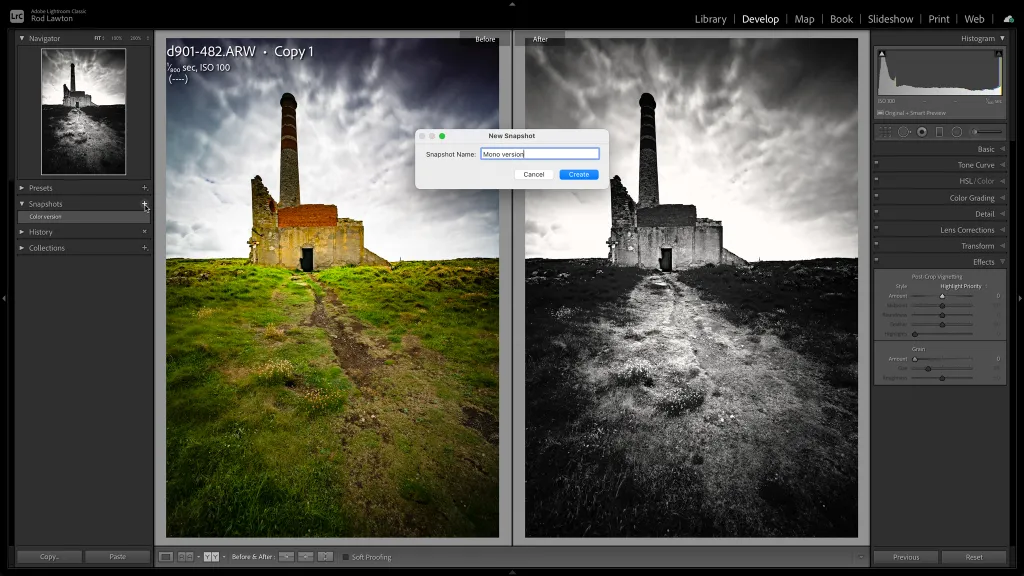
Snapshots panel can often go overlooked. By creating Snapshots for each key version of an image as you edit, and working on further adjustments (right) with one on left as reference, Snapshots become indispensable tools in editing process.
DxO Labs recently unveiled an interesting program called PureRAW that can pre-process RAW files using its own demosaicing, lens correction and DeepPRIME noise reduction technologies – yet still deliver “Linear DNG” files which Lightroom will treat like regular RAW files with DxO processing already applied.
Most photographers turn to Lightroom as the go-to program for managing and processing RAW files (it has the same engine and tools as Adobe Camera Raw), but sometimes additional work needs to be put in to produce images of similar quality as those produced from DxO PhotoLab or Capture One.
Lightroom’s integration into Adobe’s ecosystem is another huge plus point – not only because you get Photoshop included as part of an Adobe Photography Plan but also due to being able to synchronise images between Lightroom Web and Lightroom Mobile on mobile phones, syncing adjustments (and ratings) automatically across devices.
Lightroom Mobile also boasts a camera mode for quick RAW capture in Adobe DNG format – straight to your Lightroom catalog!
Are You Wondering Where and What the Cost Is of Lightroom Classic CC?
No longer do they sell Lightroom Classic as an individual product under a regular perpetual licence; rather it must now be obtained through Adobe Creative Cloud subscription; for photographers the best value option would be either regular Photography Plan at PS9.98/$9.99 which includes Lightroom Classic CC alongside Lightroom CC and Photoshop or Photography Plan With 1TB at PS19.97/$19.98 with one Terabyte Cloud Storage added (this won’t apply if choosing Lightroom Classic; more storage may become necessary as your library grows).